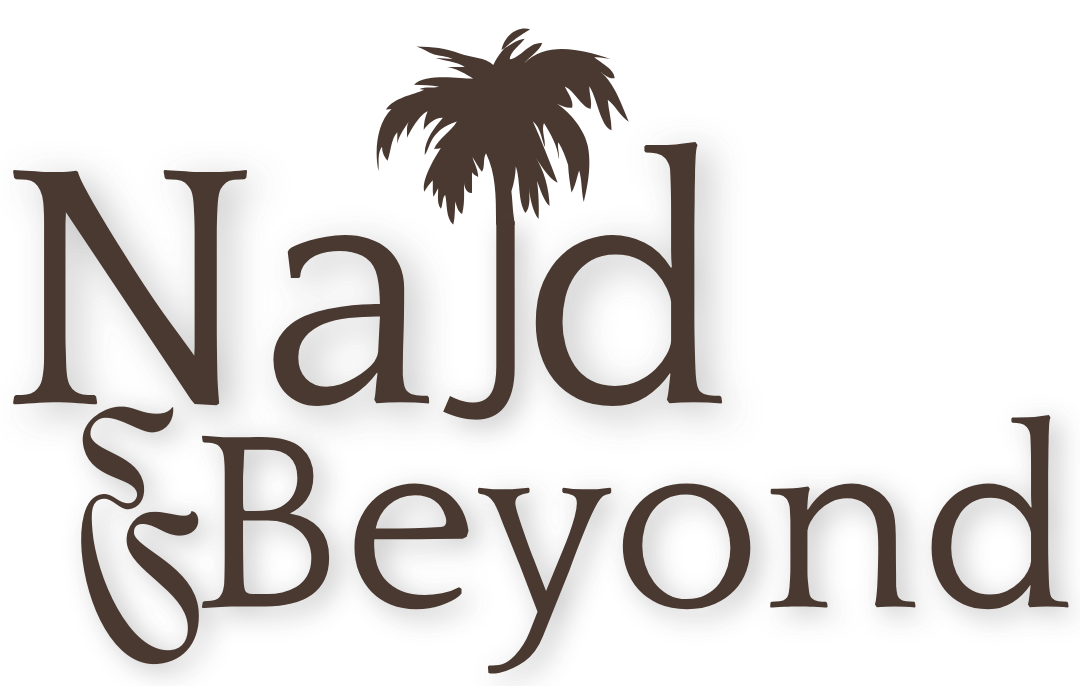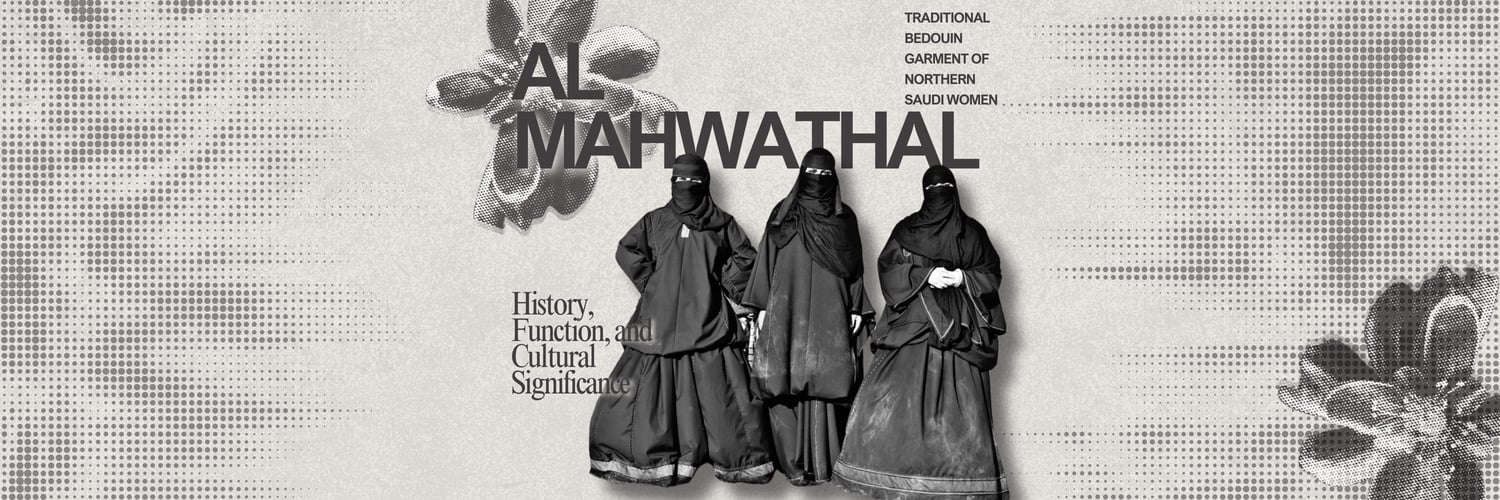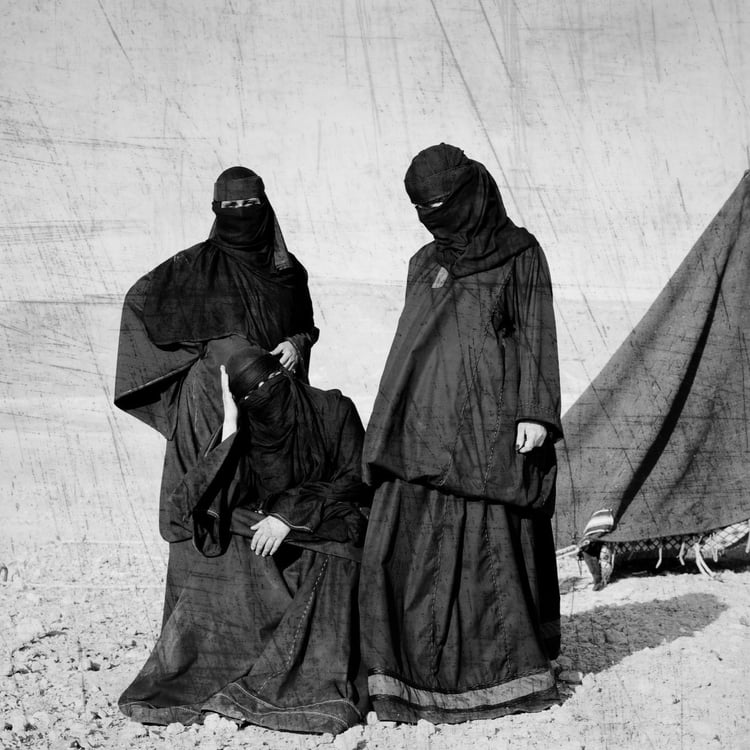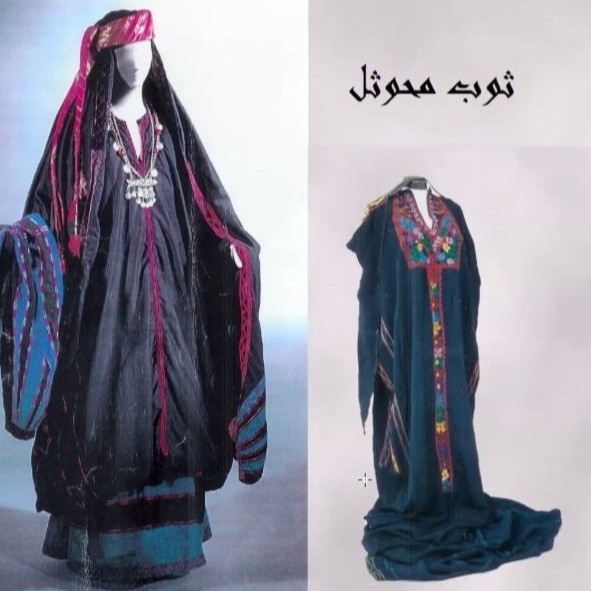
Al-Mahwathal Dress
(الثوب المحوثل)
Imagine a garment so long that it almost seems larger than the woman wearing it—yet every fold, every wrap, has a purpose. This is the Al-Mahwathal(المحوثل), a traditional Bedouin dress that has been part of northern Saudi culture for centuries. For outsiders, it may look like just a flowing robe, but for the Bedouin women of the desert, it was far more: a shield against harsh climates, a tool of mobility, and a symbol of identity and resilience.
Unlike modern clothing, which often prioritizes appearance over function, garments like the Al-Mahwathal(المحوثل) were designed to respond to the challenges of desert life. Every detail—from its length to its embroidery—tells a story about how women lived, worked, and preserved culture across generations.
Origins & Geography
The Al-Mahwathal(المحوثل) traces its roots to the northern regions of Saudi Arabia—notably Ha’il(حايل), Al-Jawf(الجوف), Tabuk(تبوك), and the Northern Borders. These areas, historically inhabited by Bedouin tribes, are marked by vast deserts, mountains, and shifting climates. Summers brought searing sun and dust-filled winds, while nights could turn bitterly cold. In such environments, clothing had to be practical, adaptable, and long-lasting.
For Bedouin women, clothing was never just about covering the body. It was an extension of their lifestyle—a necessity for survival during long journeys, migrations, and seasonal movements. In this sense, the Al-Mahwathal(المحوثل) was not only clothing but also an invention born of geography and necessity.
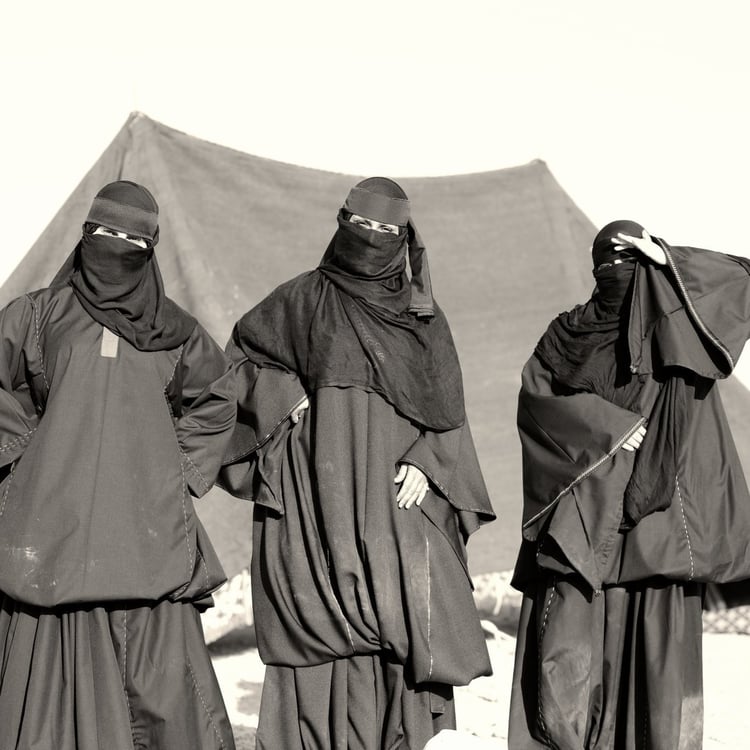
Design & Functionality
What makes the Al-Mahwathal(المحوثل) truly unique is its extraordinary length. In many cases, the garment was two to three times longer than the woman herself. Rather than dragging across the ground, the fabric was carefully folded and tucked at the waist in a technique known as “hathl(حَثَل)”
To secure it, women often used a woven belt, referred to as al-Shuwihy(الشويحي) or al-Sufeifa(السفيفه). These belts were handmade, sometimes with colorful threads, adding both practicality and artistry.
The design was highly functional:
- Protection from nature: In cold nights, the long folds could be wrapped tighter for warmth; in the heat, the fabric shielded against the sun and dust.
- Mobility in daily life: Women could adjust the folds depending on their activity—walking, riding camels, or working.
- Utility: The extra fabric could even serve to carry light items, a practical advantage in nomadic life.
Thus, the Al-Mahwathal(المحوثل) blurred the line between clothing and tool of resilience, embodying the adaptability of Bedouin culture.
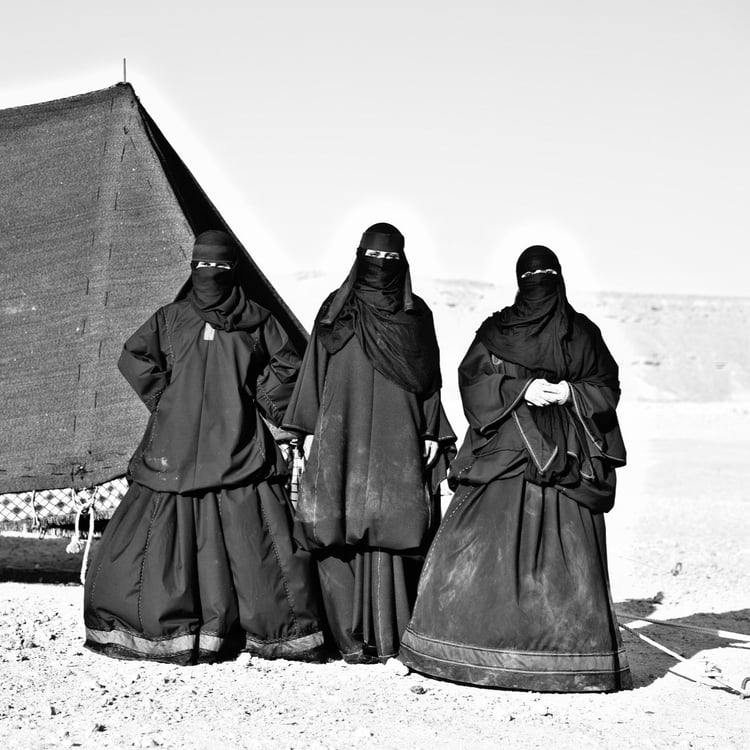
Materials, Embroidery & Decoration
The choice of fabric often reflected status and occasion. Everyday Al-Mahwathal(المحوثل) dresses were made of light cotton—ideal for desert heat. For formal occasions, heavier fabrics such as silk or wool were used, showcasing the family’s wealth and social standing.
Embroidery was perhaps the most striking element. Women adorned the garments with bright geometric and floral motifs, often stitched in red, yellow, and green against darker fabrics.
These patterns were not merely decorative:
- They carried tribal symbols that reflected identity and belonging.
- They showcased the skill of Bedouin women, who passed down embroidery techniques across generations.
- They acted as a visual language of heritage, making every garment unique.
Each Al-Mahwathal(المحوثل) thus became a canvas of culture, where threads were more than fabric—they were stories woven into clothing.
Al-Mahwathal Includes Multiple Parts:
1-The Base Dress (الثوب / al-Thawb)
- The main garment, usually long and flowing.
- Made from dark or deep-colored fabric (like black, navy, or maroon).
- Very wide and much longer than the woman’s height, giving the iconic “dragging” look.
2-The Hem Extensions (الحواشي / al-Hawashi)
- Embroidered or decorated edges at the bottom and sides of the dress.
- Sometimes reinforced with stronger stitching so the fabric can drag on sand/soil without tearing.
3-The Side Panels (الصفيّفة-السفيّفة / al-Sufeifa)
- Additional stitched strips of fabric added to widen the garment.
- They allow more movement, airflow, and give the dress a voluminous appearance.
- In some regions, these panels were decorated with patterns or hand-stitching.
4-The Sleeves (الأكمام / al-Akmām)
- Typically wide and open, allowing flexibility in movement.
- Some styles had tighter cuffs for daily work, others were left wide for gatherings.
5-The Neckline (الفتحة / al-Fatḥa)
- Modest opening around the chest area, often decorated with hand embroidery.
- Sometimes fastened with simple ties or left open under a head covering.
6-The Overlength Train (ذيل الثوب / Dhayl al-Thawb)
- The extra-long part that drags behind.
- Practical use: carried belongings, covered items, or used as a blanket in travel.
- Symbolic use: a sign of grace and Bedouin identity.
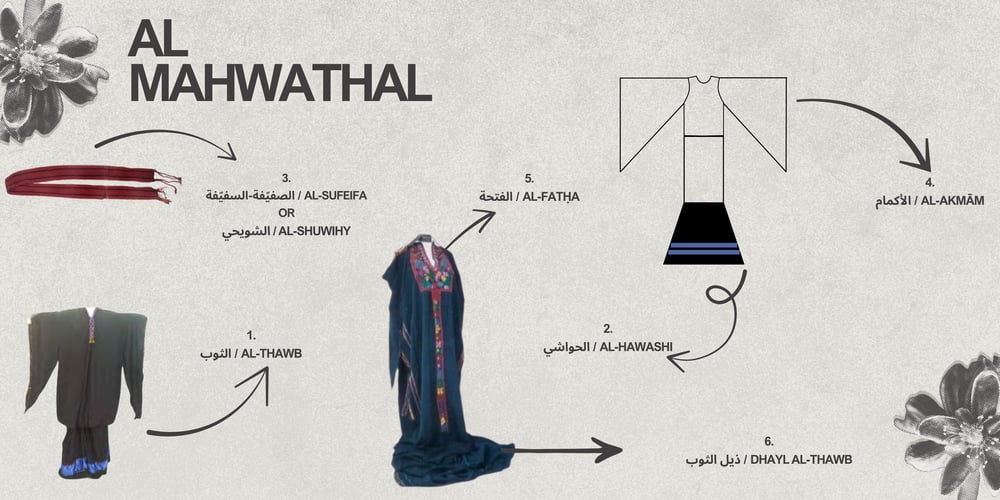
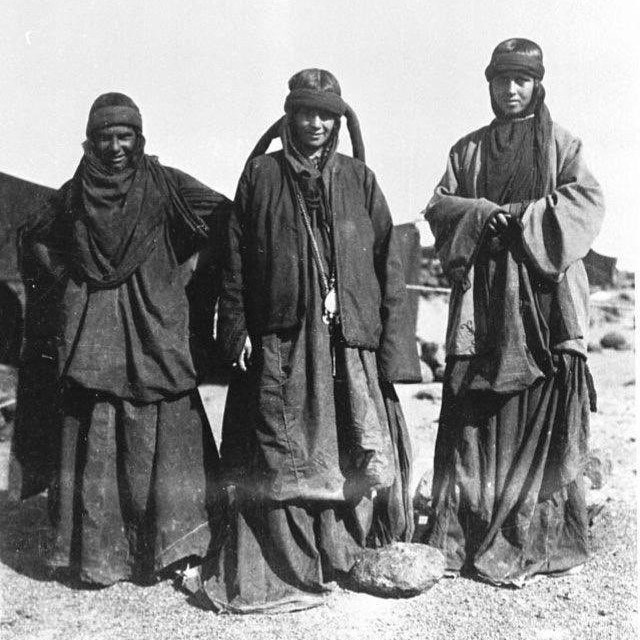
Cultural Significance & Symbolism
For Bedouin women, the Al-Mahwathal(المحوثل) was more than clothing. It carried deep layers of meaning:
- Modesty: Its enveloping length aligned with cultural and spiritual values.
- Strength: Its weight and adaptability symbolized resilience in the desert.
- Beauty & Pride: Embroidery and colors made the garment a source of elegance and distinction.
In essence, the Al-Mahwathal(المحوثل) represented the identity of women as carriers of tradition. While men’s garments symbolized authority and movement, women’s attire symbolized continuity, creativity, and heritage preservation.
With modernization, urban migration, and the rise of ready-made clothing, the Al-Mahwathal(المحوثل) slowly disappeared from daily use. By the mid-20th century, many Bedouin women had shifted to more practical, store-bought garments.
However, the Al-Mahwathal(المحوثل) has not vanished. Today, it reappears in:
- Cultural festivals such as Janadriyah(جنادريه), where traditional attire is showcased with pride.
- Museums and heritage centers, which preserve original pieces as part of Saudi identity.
- Fashion revivals, where designers draw inspiration from Bedouin garments, blending heritage with modern aesthetics.
This revival is not just about clothing but about protecting intangible cultural heritage. Each stitch, fold, and fabric choice is a reminder of the ingenuity and artistry of Bedouin women, and keeping this alive ensures the desert’s stories are never forgotten.
Links:
[1] أنتاج الأزياء التقليدية | المحوثل:
[2] الأزياء الشعبية في منطقة الجوف - سعوديبيديا
[4] ثوب المحوثل
[5] أزياء النساء التقليدية في المنطقة الشمالية من المملكة العربية السعودية - الثقافة الشعبية
[7] https://x.com/elegantlady_77/status/1760735599064174806
[8] https://x.com/elegantlady_77/status/1760747603694633166
[9] أخبار 24 | "المحوثل".. زيٌ تراثي أبرز "قوة المرأة" الشمالية و"أرضى أنوثتها" #يوم_التاسيس
[10] SAUDI-TRADITIONAL-FASHION.pdf
[11] الأزياء النسائية التقليدية في مناطق المملكة.. سحر المظهر بأبسط الأدوات
